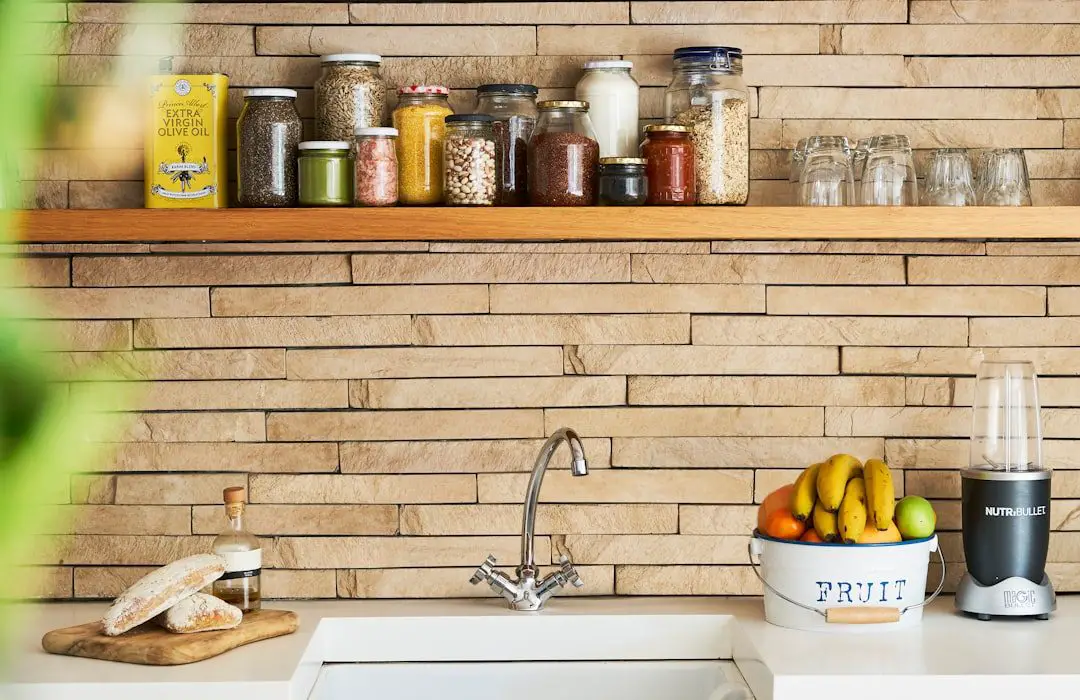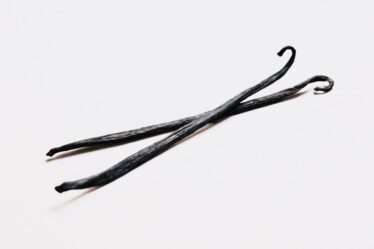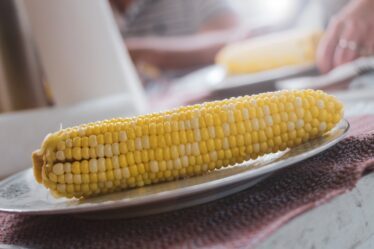
Dried red pepper, also known as chili pepper or red chili, is a popular spice used in cuisines around the world. It has a long history, dating back thousands of years to its origins in the Americas. The Aztecs and Mayans were among the first to cultivate and use dried red pepper for both culinary and medicinal purposes.
One of the main benefits of dried red pepper is its nutritional value. It is rich in vitamins A and C, as well as minerals such as potassium and iron. It also contains capsaicin, a compound that gives dried red pepper its characteristic heat and has been shown to have various health benefits.
In addition to its nutritional benefits, dried red pepper adds a unique flavor and heat to dishes. It can be used in a variety of ways, from adding a subtle kick to soups and stews, to creating fiery hot sauces and marinades. Its versatility makes it a staple in many kitchens around the world.
Key Takeaways
- Dried red pepper is a versatile ingredient that adds heat and flavor to dishes.
- When choosing and storing dried red pepper, look for bright color and store in a cool, dry place.
- Use dried red pepper to add heat to dishes like soups, stews, and marinades.
- Pair dried red pepper with other spices and herbs like garlic, cumin, and oregano for added depth of flavor.
- Try recipes featuring dried red pepper as a main ingredient, like spicy chili or harissa sauce.
How to choose and store dried red pepper
When choosing dried red pepper, there are several factors to consider. First, you’ll want to decide on the type of dried red pepper you prefer. There are many varieties available, each with its own level of heat and flavor profile. Some popular types include cayenne pepper, paprika, and Aleppo pepper.
Once you’ve chosen the type of dried red pepper you want, it’s important to check for freshness. Look for peppers that are bright in color and have a strong aroma. Avoid peppers that are dull or have a musty smell, as this can indicate that they are past their prime.
Proper storage techniques are essential for maintaining the flavor and quality of dried red pepper. It should be stored in an airtight container in a cool, dark place, away from moisture and sunlight. This will help prevent the peppers from losing their flavor and becoming stale.
Using dried red pepper to add heat to your dishes
There are many ways to use dried red pepper in cooking to add heat to your dishes. One popular method is to use it as a seasoning in marinades and rubs for meats and vegetables. Simply sprinkle a small amount of dried red pepper onto the food before cooking, or mix it with other spices and herbs for a more complex flavor.
Another way to use dried red pepper is to make a spicy sauce or condiment. You can blend dried red pepper with other ingredients such as garlic, vinegar, and oil to create a hot sauce or chili paste. This can be used as a topping for tacos, burgers, or grilled meats, or as a base for soups and stews.
If you prefer a milder heat, you can control the level of spiciness by adjusting the amount of dried red pepper you use. Start with a small amount and taste as you go, adding more if desired. You can also remove the seeds and membranes from the peppers before using them, as this is where most of the heat is concentrated.
When pairing dried red pepper with different types of food, it’s important to consider the flavors and textures of the other ingredients. Dried red pepper pairs well with rich and fatty foods, such as meats and cheeses, as it helps cut through the richness and adds balance. It also complements sweet and tangy flavors, such as tomatoes and citrus fruits.
Pairing dried red pepper with other spices and herbs
| Spices/Herbs | Flavor Profile | Pairing Suggestions |
|---|---|---|
| Garlic | Earthy, pungent | Great for marinades and rubs for meats |
| Cumin | Warm, earthy | Perfect for chili and other Mexican dishes |
| Paprika | Sweet, smoky | Use in spice blends for grilled meats and vegetables |
| Thyme | Herbaceous, slightly minty | Great for seasoning roasted vegetables and potatoes |
| Oregano | Earthy, slightly bitter | Use in Italian and Mediterranean dishes |
Dried red pepper can be paired with a variety of other spices and herbs to create complex and flavorful dishes. Some common pairings include garlic, onion, cumin, coriander, oregano, and thyme.
When using dried red pepper with other spices and herbs, it’s important to balance the flavors so that one does not overpower the others. Start with small amounts of each spice and herb, and adjust to taste. You can also experiment with different combinations to find your preferred flavor profile.
There are many recipes that feature dried red pepper and other spices and herbs. One example is a spicy chili con carne, which combines dried red pepper with cumin, coriander, and oregano for a flavorful and hearty dish. Another example is a spicy Thai curry, which pairs dried red pepper with lemongrass, ginger, and cilantro for a fragrant and spicy sauce.
Recipes featuring dried red pepper as a main ingredient
Dried red pepper can also be used as a main ingredient in recipes, where it takes center stage and provides the main flavor and heat. Here are a few recipes that feature dried red pepper:
1. Spicy dried red pepper sauce: In a blender, combine dried red pepper, garlic, vinegar, oil, salt, and sugar. Blend until smooth and adjust the seasoning to taste. This sauce can be used as a marinade for grilled meats or as a dipping sauce for vegetables.
2. Dried red pepper and chicken stir-fry: In a hot skillet, heat oil and add dried red pepper flakes, garlic, and ginger. Stir-fry until fragrant, then add sliced chicken breast and cook until cooked through. Add vegetables such as bell peppers and broccoli, and cook until tender-crisp. Season with soy sauce and serve over rice or noodles.
3. Dried red pepper and beef chili: In a large pot, brown ground beef with onions and garlic. Add canned tomatoes, tomato paste, kidney beans, dried red pepper flakes, cumin, chili powder, salt, and sugar. Simmer for at least an hour to allow the flavors to meld together. Serve with shredded cheese and sour cream.
4. Dried red pepper and vegetable curry: In a large pot, heat oil and add dried red pepper flakes, garlic, ginger, and curry powder. Cook until fragrant, then add chopped vegetables such as carrots, potatoes, and cauliflower. Stir in coconut milk and simmer until the vegetables are tender. Serve over rice or with naan bread.
Using dried red pepper to make homemade spice blends

Making your own spice blends allows you to customize the flavors to your liking and ensures that you are using fresh and high-quality ingredients. Dried red pepper can be a key ingredient in many homemade spice blends.
One benefit of making your own spice blends is that you can control the level of heat by adjusting the amount of dried red pepper you use. You can also experiment with different combinations of spices and herbs to create unique flavor profiles.
Some popular spice blends featuring dried red pepper include Cajun seasoning, Mexican chili powder, and Indian curry powder. These blends can be used to season meats, vegetables, soups, and stews, adding depth and complexity to your dishes.
When storing homemade spice blends, it’s important to keep them in airtight containers in a cool, dark place. This will help preserve their flavor and prevent them from becoming stale. It’s also a good idea to label the containers with the date they were made, so you know when it’s time to refresh your spice blends.
Dried red pepper in international cuisine
Dried red pepper is used in cuisines around the world to add heat and flavor to dishes. It is a staple in many traditional dishes and is an essential ingredient in many international cuisines.
In Mexican cuisine, dried red pepper is used in dishes such as chili con carne, enchiladas, and mole sauce. It adds a spicy kick and depth of flavor to these dishes.
In Thai cuisine, dried red pepper is used in curries, stir-fries, and soups. It adds heat and complexity to these dishes, balancing the sweet, sour, and salty flavors.
In Indian cuisine, dried red pepper is used in spice blends such as garam masala and curry powder. It is also used in dishes such as vindaloo and biryani, where it adds heat and flavor.
In Chinese cuisine, dried red pepper is used in dishes such as Kung Pao chicken and Mapo tofu. It adds a fiery kick and numbing sensation to these dishes.
Health benefits of dried red pepper
In addition to its culinary benefits, dried red pepper also has several health benefits. It is rich in vitamins A and C, which are important for immune function and skin health. It also contains capsaicin, a compound that has been shown to have anti-inflammatory and pain-relieving properties.
Consuming dried red pepper may also help boost metabolism and aid in weight loss. The capsaicin in dried red pepper has been shown to increase thermogenesis, or the production of heat in the body, which can help burn calories.
However, it’s important to note that consuming dried red pepper in large amounts or on an empty stomach can cause digestive discomfort or irritation. It’s best to start with small amounts and gradually increase your tolerance.
Tips for cooking with dried red pepper
When cooking with dried red pepper, it’s important to handle it safely to avoid irritation or burns. Avoid touching your face or eyes after handling dried red pepper, as the capsaicin can cause a burning sensation. It’s also a good idea to wear gloves when handling dried red pepper, especially if you have sensitive skin.
There are several different cooking techniques you can use when working with dried red pepper. You can toast whole dried red peppers in a dry skillet until they become fragrant, then grind them into a powder using a spice grinder or mortar and pestle. This will intensify the flavor and heat of the dried red pepper.
You can also rehydrate dried red pepper by soaking it in hot water for about 20 minutes, then draining and using it in your recipe. This will soften the peppers and make them easier to incorporate into dishes.
When using dried red pepper in recipes, it’s important to adjust the other ingredients to balance the flavors. If a dish becomes too spicy, you can add more sweet or acidic ingredients, such as sugar or vinegar, to help counteract the heat.
Conclusion and final thoughts on incorporating dried red pepper into your cooking routine
In conclusion, dried red pepper is a versatile and flavorful spice that can add heat and complexity to your dishes. It has a long history and is used in cuisines around the world.
When choosing and storing dried red pepper, it’s important to consider the type of pepper you prefer and to store it properly to maintain its flavor and quality.
There are many ways to use dried red pepper in cooking, from adding a subtle kick to dishes, to creating fiery hot sauces and marinades. It can be paired with other spices and herbs to create complex flavor profiles, and can also be used as a main ingredient in recipes.
Dried red pepper has several health benefits, but it’s important to consume it in moderation and be aware of any potential digestive discomfort or irritation.
Overall, incorporating dried red pepper into your cooking routine can add excitement and flavor to your dishes. Don’t be afraid to experiment and try new recipes – you may discover a new favorite spice!
If you’re a fan of dried red pepper and love exploring new flavors, you won’t want to miss out on this article about making your own Coquito. Coquito is a traditional Puerto Rican holiday drink that combines the richness of coconut milk with the warmth of spices like cinnamon and nutmeg. In this article, you’ll find a step-by-step recipe that includes a surprising twist – the addition of dried red pepper! This unexpected ingredient adds a subtle heat to the creamy and indulgent Coquito, taking it to a whole new level of deliciousness. Check out the article here and get ready to spice up your holiday season!



